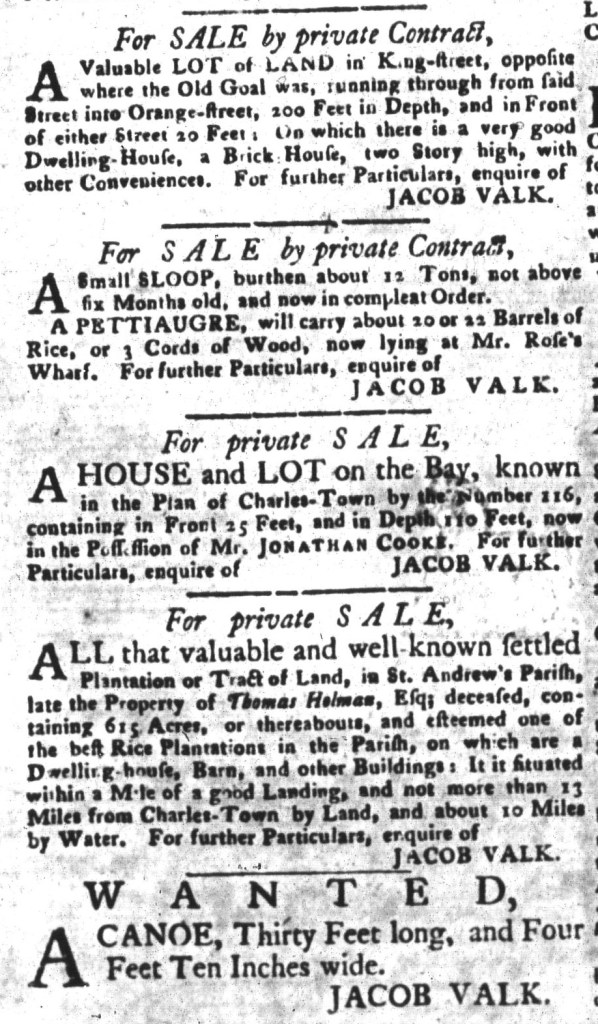What was advertised in a colonial American newspaper 250 years ago today?

“For further particulars, enquire of JACOB VALK.”
Jacob Valk established a brokerage office in Charleston in the early 1770s. In his newspaper advertisements, he advised, “Lands, Houses, and Negroes, Bought and sold at private Sale, upon the usual Commission.” If the pages of the public prints provide any guidance, many colonizers availed themselves of his services, entrusting the broker to conduct business on their behalf. His name became a familiar sight as he placed advertisement after advertisement for his clients.
Consider the supplement that accompanied the April 26 edition of the South-Carolina Gazette and Country Journal. Valk purchased an entire column on the third page, running fourteen advertisements. Some offered tracts of land for sale, while others included houses and other buildings along with land. Two of them announced sales of enslaved people, one indicating “SEVERAL NEGROES” without giving further details and the other describing “two very valuable Negro Shoe-makers.” Valk sought buyers for “A Small Sloop” and a pettiaugre (or canoe). In each instance, he invoked a familiar refrain: “For further Particulars, enquire of JACOB VALK.” He also assisted executors of estates in calling on those who had unfinished business to settle accounts, inviting them to his office “where the Particulars of that Estate now lay ready for their Perusal.” Four days earlier, Valk purchased a similar amount of space to run many of the same advertisements in the South-Carolina and American General Gazette.
The broker must have factored the cost of advertising into the “usual Commission” that he received for his services, especially considering that he was one of the best customers for the printing offices in Charleston. That he continuously placed newspaper advertisement testifies to his confidence in their general effectiveness, though not every notice may have achieved the desired results. Running so many simultaneously allowed him to distribute the risk and rewards of advertising. Even if some advertisements did not attract buyers, sellers, or associates seeking to settle accounts, others apparently did. When considered collectively, Valk came out ahead on what he invested in advertising. His individual clients, however, would not have had the same experience had they gone it alone. If they paid Valk on commission following a transaction he facilitated, then they paid only for successful advertisements without losing money on notices that did not produce the intended results.
